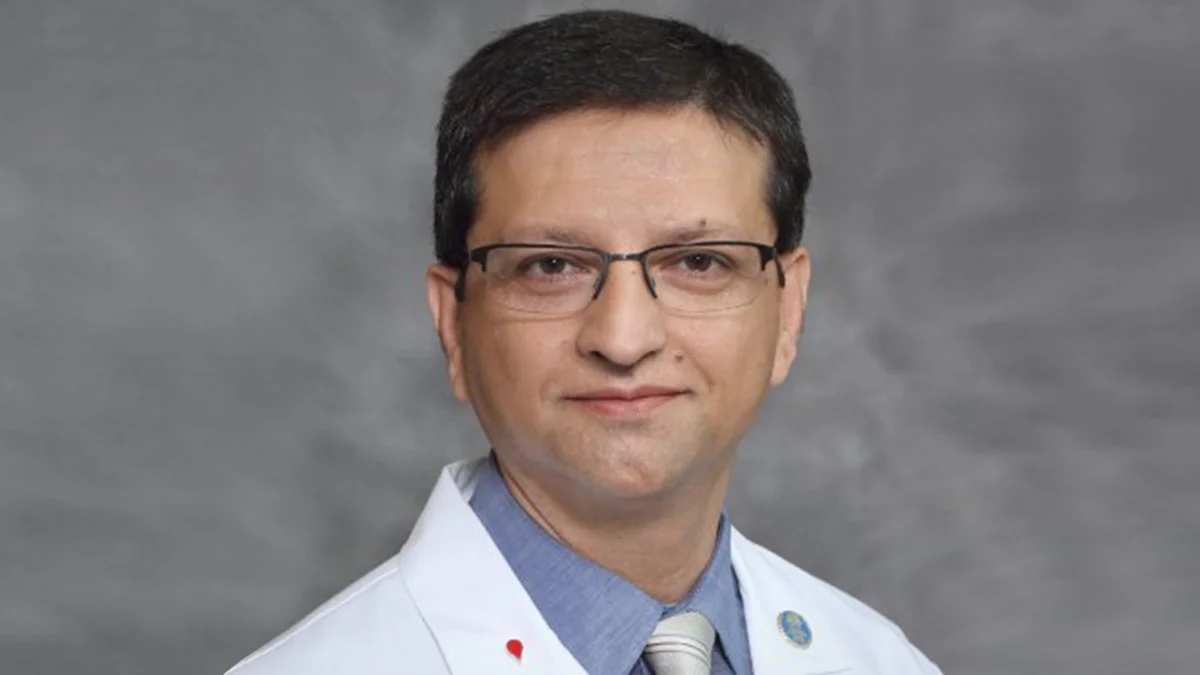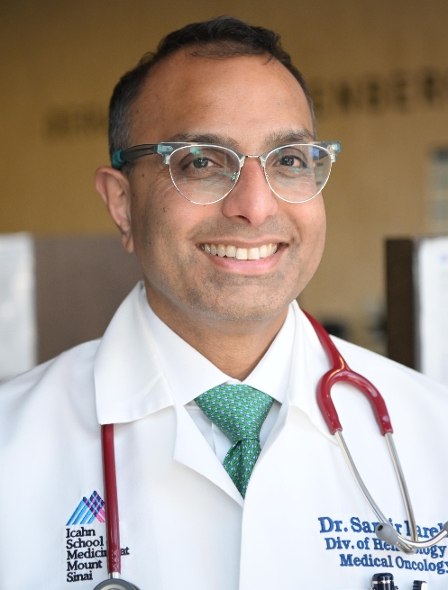
In early 2025, Mayo Clinic Laboratories announced a collaboration with Lucence to expand international access to cancer testing services and improve patient outcomes. Lucence will provide access to LiquidHALLMARK, its next-generation sequencing liquid biopsy, through Mayo Clinic Laboratories. This assay detects clinically relevant biomarkers by analyzing circulating tumor DNA (ctDNA) and ctRNA through blood-based tests.1
William Morice, MD, PhD, President and Chief Executive Officer of Mayo Clinic Laboratories in Rochester, Minnesota, spoke with Blood Cancers Today about the collaboration with Lucence, the role of emerging technology and artificial intelligence at Mayo Clinic, and other initiatives to improve diagnostics and outcomes of patients with hematological malignancies.
Read more: Mayo Clinic Enters Collaboration With Lucence to Expand Global Cancer Testing Access
Can you please describe the Mayo Clinic and Lucence collaboration and how it will impact patients with hematological malignancies?
Lucence has developed a novel technology, and this will enable us to make that testing more available to patients. They’re a Singapore-based company, but they do have a presence in the United States. We are taking our distribution channel of Mayo Clinic Laboratories and bringing the Lucence test to market through that channel. Our oncologists work with them institutionally as well. From the Mayo Clinic Laboratories and Lucence perspective, it’s really about helping them bring their tests to the U.S. market.
How can Lucence’s LiquidHALLMARK assay help clinicians make treatment decisions?
This is a field that’s really taken off over the last 3-5 years, where we’re really starting to see this technology impacting clinical care. Over 10 years ago, we first realized that solid tumors shed nucleic acid into the peripheral blood, and that you can analyze peripheral blood, or genomic abnormalities housed within a tumor, both blood-based and solid tumors.
Liquid biopsy is the general term that’s used for analyzing the peripheral blood for genetic abnormalities shed from neoplasms, from malignancies. This is a technology which does that, but it also has some unique attributes compared to some of the other things that are out there. If a patient has a known cancer, you can now look into the peripheral blood to look for the signature of the cancer. This is what’s called a theragnostic test, so it can help with therapy selection as well, because you can find genetic abnormalities in a tumor in the peripheral blood that can lead to a targeted therapy. That’s where this has a real advantage as well.
What other initiatives or technologies are available at Mayo Clinic Laboratories that could impact patients with blood cancers?
We have over 4,000 tests in our academic department that we offer, and many are focused on hematological malignancies. We have both flow- and molecular-based methods to look for minimal residual disease, which is a standard of care in many of those malignancies. In solid tumors, we have tumor-based tissue assays, including some that are more focused on specific disease types, which can be quite helpful in the care of patients.
That’s why Lucence is such a nice complement to that, because we did not have a liquid biopsy type test that could provide the type of interrogation that Lucence can do. One of the shortcomings in blood-based cancer testing is that when we look for genetic abnormalities in tumors, we look at both DNA and RNA. Because some of the genetic abnormalities are much more readily detected with RNA transcripts—particularly like in hematological malignancies, gene fusions, and some of those things that are too big to be seen by next-generation sequencing (NGS) of DNA—Lucence allows you to look for both DNA and RNA in the peripheral blood.
Prior to this, the other liquid biopsies have a blind spot into an important area of genomic testing and cancer. That’s one of the reasons why we’re excited to be working with Lucence on this technology. They have the ability to look for both RNA and DNA, which is unique.
Artificial Intelligence (AI) is growing in the field of hematological malignancies to advance diagnosis and treatment. What role does AI have at Mayo Clinic Laboratories?
I would say it’s a growing one, and it really spans the gamut. One of the reasons I love working at Mayo is that we are very patient-focused. Technologies are great, but the most important thing is to provide answers to complex questions. We’re using AI to help us scale our ability to do that.
Some of the tests I mentioned, like flow cytometry, can be very complex. We’re using AI to interpret some of the histograms and data coming off the instrument to shorten the turnaround time from 2 hours to 30 seconds. We’re also considering using large language models to look across multiple data sets and help provide answers as we look for diagnostics across technology.
What do you hope to see in blood cancer research in the next 5-10 years? How can Mayo Clinic take part in getting there?
As we get more and more sophisticated diagnostic tools, we’ll start to recognize different types or subtypes of disease which require different treatments and approaches. We’re seeing this even in neurodegenerative diseases, such as Alzheimer’s, which allows for more specific treatments.
Certainly, cancer is the same way. We still think of cancer primarily from an organ-based perspective, like breast cancer or lung cancer, where we’ll start to have molecular subtypes of cancer. In the next 5 years, I think we’ll have a much more sophisticated approach to diagnosing cancer, and therefore a much greater ability to have specific therapies. This will also make it much more convenient for patients.
For example, with the Lucence assay, patients can now get therapy selection without having to have another biopsy. At some point soon, we’ll start to see patients monitor for disease recurrence with more blood-based testing without having to undergo so many radiologic procedures. Over the next 5 years, the paradigm about how we think about cancer and how a person lives with cancer is going to change. That’s going to start with diagnostics.
Our role at Mayo Clinic Laboratories is to look across the spectrum of technologies, understanding how to put the puzzle together for a patient, and then making that puzzle solved and accessible. We’re going to help bring together a holistic offering so that a patient or doctor can go to one spot and understand how to use the most routine and advanced assays to care for their patients—and do that not just domestically, but globally.
One thing we’re seeing off the COVID pandemic is the global recognition of the importance and the investment in healthcare where infectious disease, as well as cancer, is still a heavy burden. We’ll participate in that not just domestically, but globally. It’s the right thing for patients.
Can you further expand on Mayo Clinic’s global initiatives?
If you’ve ever visited our campus, you can go to the oval office and see that Will and Charlie Mayo visited the world, both sharing and learning surgical techniques. This is something that’s been part of the Mayo Clinic fabric since its inception.
Right now on the care side, we have Mayo Clinic International, where we’re going and building relationships with hospitals and healthcare delivery systems and other parts of the world to help share knowledge and learn. We’re doing the same thing with Mayo Clinic Laboratories. We already have activities in over 60 countries, so we’ve been a global business for some time. As the appetite for global diagnostics grows, we want to help that grow in a way that’s responsible for patients.
Mayo Clinic landed #1 on Newsweek’s World’s Best Hospitals 2025. What does this mean to you as President and CEO of Mayo Clinic Laboratories?
It means a lot. I’ve been here my whole career, since 1987. Every year, I see that it’s an affirmation of our mission and our need to keep the patient at the center. The fact that we’re grounded in our Franciscan values—going back to the founding of Mayo Clinic Hospital by the Franciscan nuns. Those are still the values that cue our institution together and draw together talented people from many different parts of the world. It’s a validation of our practice model, which was unique at the time, and the power of having a mission and values. Most importantly, it’s a validation of the power of teamwork. I feel very humbled to be part of such an incredible team that gets that recognition.
Are there any final thoughts you would like to share?
It’s a very exciting time for patients with cancer to start to think about cancer not as a disease that you die from, but that you live with and manage and hopefully it can be cured. Tools like the Lucence assay are going to be an important part of that. We’re really excited to work with our own Mayo Clinic practice as well as partners like Lucence to create the solutions patients need going forward.
Reference
- Suzanne Ferguson. Mayo Clinic Laboratories and Lucence announce strategic collaboration to enhance cancer testing services. January 10, 2025. Accessed February 7, 2025. https://newsnetwork.mayoclinic.org/discussion/mayo-clinic-laboratories-and-lucence-announce-strategic-collaboration-to-enhance-cancer-testing-services






 © 2025 Mashup Media, LLC, a Formedics Property. All Rights Reserved.
© 2025 Mashup Media, LLC, a Formedics Property. All Rights Reserved.